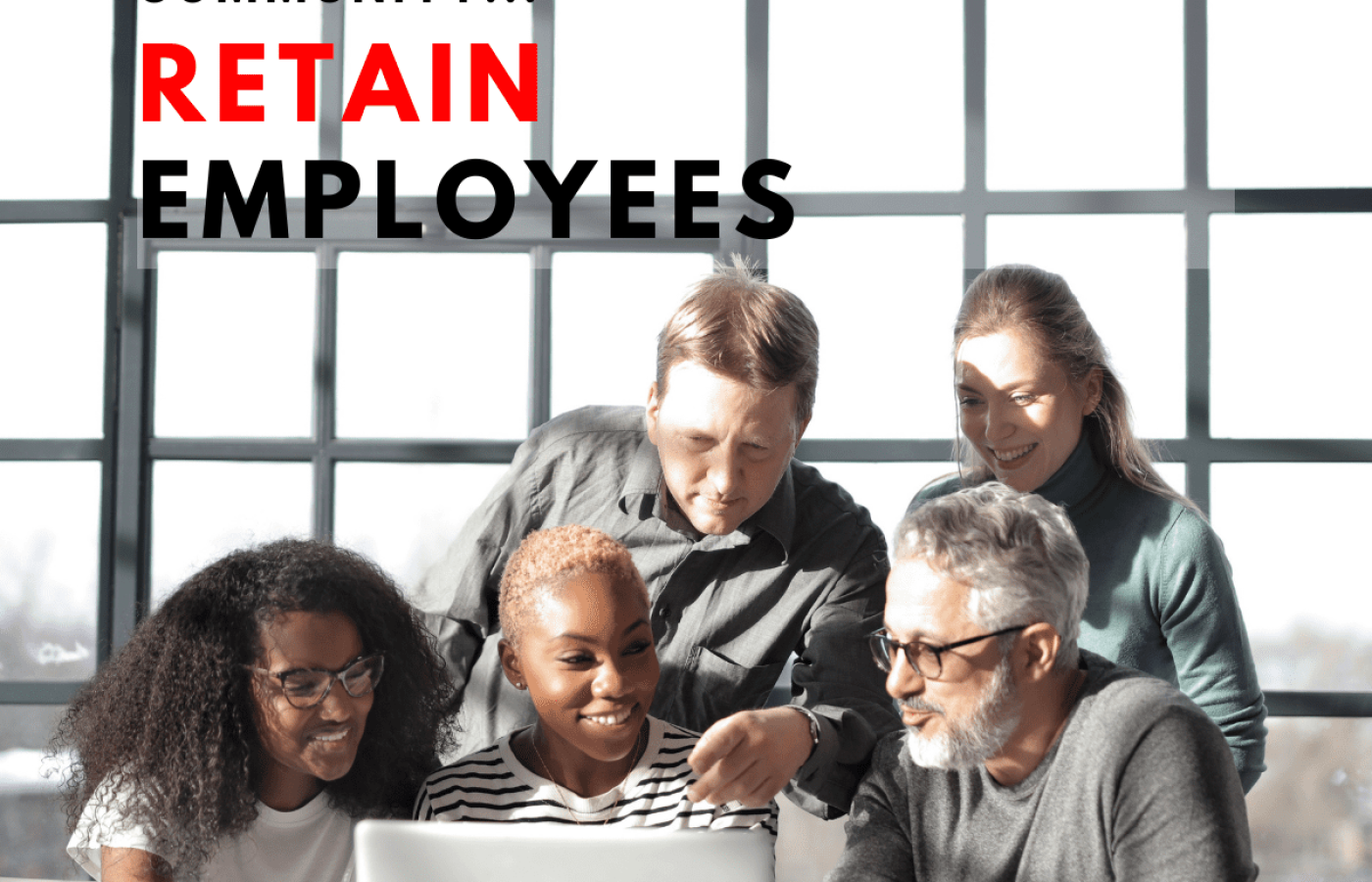A Sense of Purpose and Community Retain Employees

“Microsoft’s recent research suggests that 41% of workers across the world are thinking about quitting their jobs. That means 59% of workers aren’t thinking about quitting. “
How do these organizations retain their employees?
Author Ron Carucci gathered some insights from his interview of HR Executives that three practices appeared to be common across companies.
A Culture of Solidarity
The top two reasons employees cited for leaving their companies were that they didn’t feel their work was valued (54%) or that they lacked a sense of belonging at work (51%).“We want people to feel like everything they do matters not just to the organization, but to each other. We want people to feel a shared sense of purpose as well as fulfillment in their own purpose.”
Here are some ideas to manifest this culture:
Personal aspiration should be a part of manager conversations. Encourage managers to set regular meetings with direct reports. Create simple approaches that teach managers how to shape meaningful conversations, asking how their people are progressing with their professional or personal aspirations. By taking an interest in the whole employee, you ensure that they bring that same creativity and energy to their day jobs.
Highlight someone’s embodiment of your organizational purpose. Acknowledging when someone personally embodies your organizational purpose provides wonderful reinforcement and reminds others to be intentional about doing the same.
Make extra effort in connecting with remote workers. Working from home has hampered our sense of community. Being creative in helping people feel connected without adding to “zoom fatigue like paying for coffee gift cards for employees to reach out across team boundaries could foster connections and broaden their networks helping them maintain a wider organizational perspective.
Allow employees to co-create their workplace experience. More companies are offering remote work opportunities that don’t require people to relocate from homes and communities. Poaching talent will be easier.
It is time to listen to your employees to understand their deeper needs. You can’t have the same policy for all employees of various circumstances. The organization should set parameters for what’s best for the business, then allow local managers to use as much discretion as possible. These managers should engage their teams meeting the requirements of the business the best way while also meeting the needs for team flexibility.
Here are ways to involve employees in creating a positive workplace experience:
Make flexible policies connected to the business. Connect the guidelines you put in place about how you serve customers and how you make or deliver products or services, and demonstrate how certain forms of collaboration are measurably enhanced by in-person work.
Encourage solidarity through ownership of policy. People feel greater ownership over policies they help create.
Development should be designed into everyday experience. Design learning and advancement skills right into people’s roles instead of a “separate” experience. For example, conducting peer-mentoring sessions between people that regularly work together to ensure collaboration despite remote work would in the process have a change in people on how to perform their own jobs.
Coach managers really care. Even the smallest acts of kindness have been impactful during the pandemic. It has created a great appreciation for humanity, offering opportunities to care for those who are struggling. People are hurting and tired. Showing compassion should be central to our leadership. Empathy and care are now necessary.
Encourage gestures of kindness. Equip managers to offer small acts of care and support as the need arises.
Show your vulnerability. When others see you acknowledging difficulties, it shows them it’s okay for them to do so.
Know what it is that’s keeping people with you and do more. Stop throwing superficial perks at the problem. Genuinely seek their feedback, adapt to their needs and start shifting your culture to one which people will be thrilled to work in.

